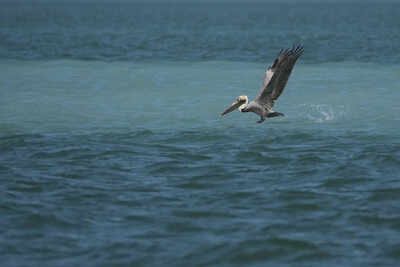New Zealandâs Environment Report Highlights Urgent Challenges and Signs of Hope

A major new report on New Zealandâs environment has unveiled a concerning outlook for the countryâs unique species, particularly in relation to declining water health. However, the report also noted some positive trends in air quality. This comprehensive assessment, titled Our Environment 2025, is released every three years by the Ministry for the Environment and compiles statistics, data, and research across five critical domains: air, atmosphere and climate, freshwater, land, and marine ecosystems. The findings aim to provide a detailed snapshot of the current state of New Zealandâs environment.
James Palmer, the secretary for the environment at the ministry, characterized the results as a âmixed bag.â He emphasized that while the report highlights significant risks to people, communities, and the natural environmentârisks that, if left unaddressed, could jeopardize livelihoods and diminish quality of life for future generationsâit also presents reasons for cautious optimism. Palmer remarked, âIt does highlight the real risks to people, communities, and places, which left unaddressed threaten our livelihoods and our quality of life for generations to come. But the report also shows that there are reasons for optimism.â
One of the most alarming aspects of the report is its portrayal of New Zealandâs indigenous fauna. The data reveals that a staggering 76% of the countryâs freshwater fish, 68% of freshwater birds, 78% of terrestrial birds, 93% of frogs, and a striking 94% of reptiles are threatened with extinction or are at risk of becoming endangered. The report underscores that New Zealand is facing a biodiversity crisis, with a high proportion of threatened or at-risk speciesâone of the highest globally. Factors contributing to this alarming trend include land use changes, pollution, invasive species, and the overarching impacts of climate change.
Furthermore, the report identified a prevalent issue concerning water quality, particularly in groundwater sources. The presence of E. coli, a harmful bacteria typically found in the intestines of animals and humans, poses a significant public health risk. This contamination has been linked to agricultural practices and urban runoff. Out of more than 1,000 groundwater monitoring sites assessed, nearly 50% failed to meet the drinking water standard for E. coli at least once between 2019 and 2024, and almost half of the monitored rivers exhibited worsening E. coli trends.
Additionally, a considerable number of groundwater sources have been found to contain excess nitrates, primarily due to intensive farming, logging, and urban development. These contributing factors not only compromise drinking water quality but also degrade surface water ecosystems, posing long-term ecological risks.
Dr. Mike Joy, a senior research fellow specializing in freshwater ecology and environmental science at Victoria University of Wellington, expressed deep concern over the reportâs findings. He stated, âThe report reveals starkly the fallacy of the label âclean green New Zealandâ and the urgent need for this to be taken seriously by government.â His remarks underscore the gravity of the situation and call for immediate and effective policy responses.
The report also highlights the growing issue of invasive pest plants, with wilding conifers being particularly problematic. Palmer noted that approximately 2 million hectares of land are currently invaded by these conifers, which thrive outside of their native habitats and spread from plantation forests. Alarmingly, the area affected by wilding conifers is expanding by around 90,000 hectares annually, threatening to invade up to a quarter of New Zealandâs land, including significant conservation areas, within the next three decades if not properly managed.
Moreover, the report outlines the potential impacts of the climate crisis on New Zealanders, emphasizing the increasing severity and frequency of extreme weather events. For instance, Cyclone Gabrielle in 2023 highlighted the vulnerabilities faced by communities; around 750,000 individuals and 500,000 buildings are situated near rivers and coastal areas already prone to extreme flooding. Low-lying communities face a heightened risk from rising sea levels, while rural areas are increasingly susceptible to wildfires.
Palmer stated, âWeâll face some tough choices about our priorities as a country, including about where we put our efforts and our scarce dollars.â This statement encapsulates the challenges ahead and the need for strategic decision-making to address these pressing environmental issues.
Despite the many challenges outlined in the report, there are also notable improvements, particularly concerning air quality. While road transport remains the primary source of nitrogen oxide pollution, air pollution from motor vehicles is decreasing thanks to stricter emissions standards, an increase in the use of lower-emission vehicles, and advancements in engine and fuel technologies. Palmer observed, âWeâve started to turn the corner in meaningful ways on some of our measuresâchoices about the cars we drive, the heating we use for our homes, for example, are showing up in better air quality, which is likely to flow through into better health.â
Ultimately, Palmer's comments convey the message that tangible progress is possible. âThat underscores that we can make a difference, and we can build on the momentum that is already underway by doing more,â he concluded, leaving room for hope in the face of significant environmental challenges.


















